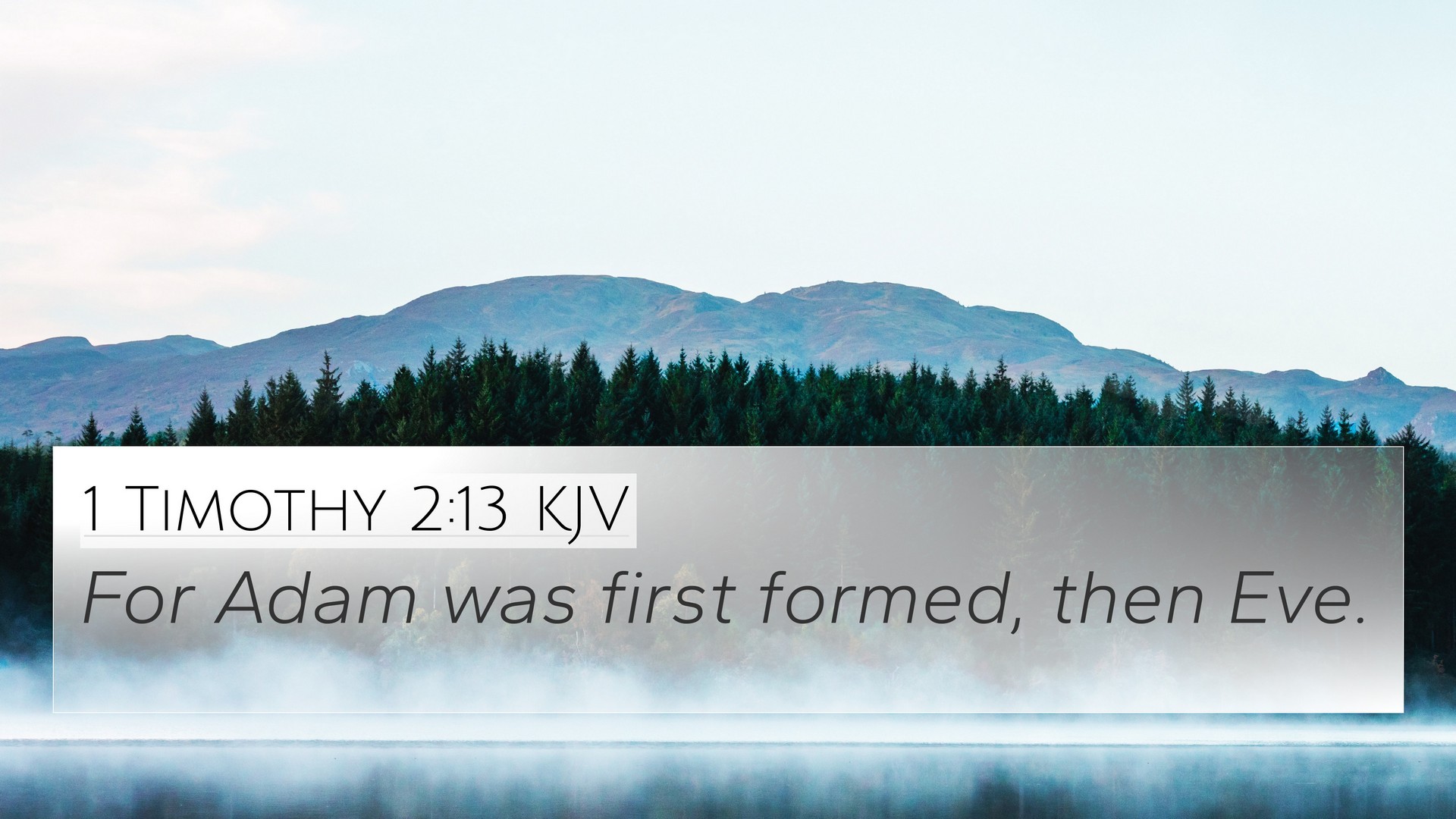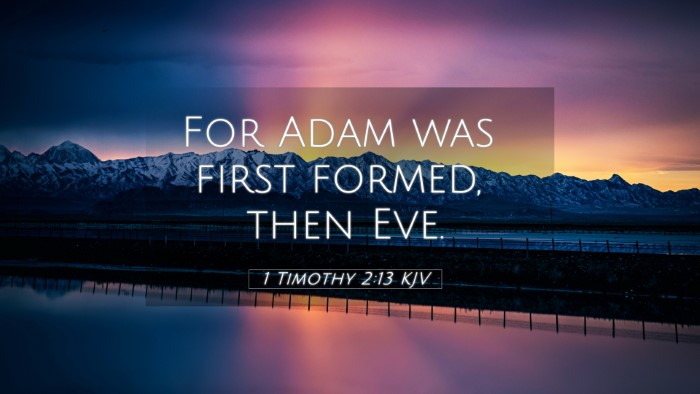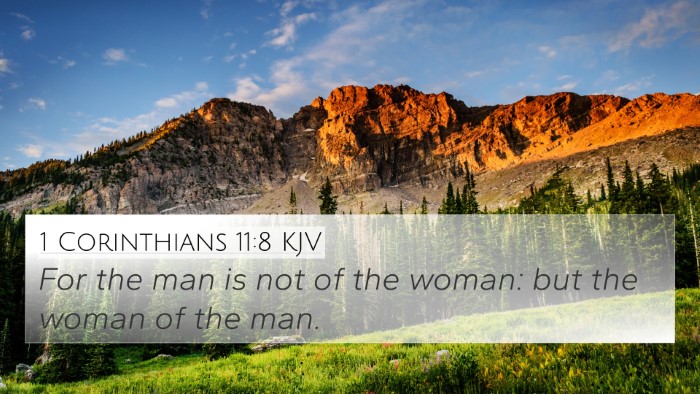Old Testament
Genesis Exodus Leviticus Numbers Deuteronomy Joshua Judges Ruth 1 Samuel 2 Samuel 1 Kings 2 Kings 1 Chronicles 2 Chronicles Ezra Nehemiah Esther Job Psalms Proverbs Ecclesiastes Song of Solomon Isaiah Jeremiah Lamentations Ezekiel Daniel Hosea Joel Amos Obadiah Jonah Micah Nahum Habakkuk Zephaniah Haggai Zechariah Malachi1 Timothy 2:13 Similar Verses
1 Timothy 2:13 Cross References
For Adam was first formed, then Eve.
Uncover the Rich Themes and Topics of This Bible Verse
Listed below are the Bible themes associated with 1 Timothy 2:13. We invite you to explore each theme to gain deeper insights into the Scriptures.
1 Timothy 2:13 Cross Reference Verses
This section features a detailed cross-reference designed to enrich your understanding of the Scriptures. Below, you will find carefully selected verses that echo the themes and teachings related to 1 Timothy 2:13 KJV. Click on any image to explore detailed analyses of related Bible verses and uncover deeper theological insights.

Genesis 2:18 (KJV) »
And the LORD God said, It is not good that the man should be alone; I will make him an help meet for him.
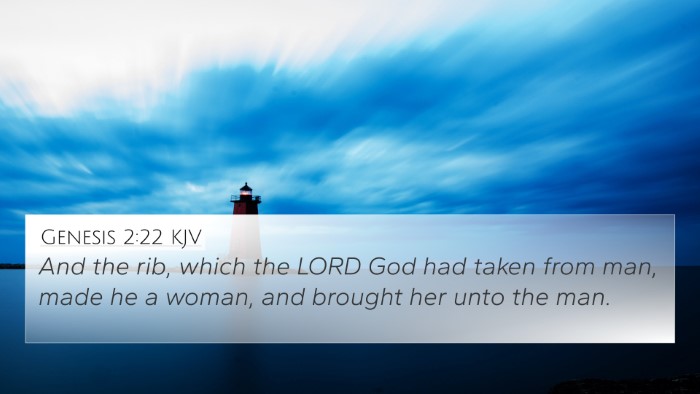
Genesis 2:22 (KJV) »
And the rib, which the LORD God had taken from man, made he a woman, and brought her unto the man.
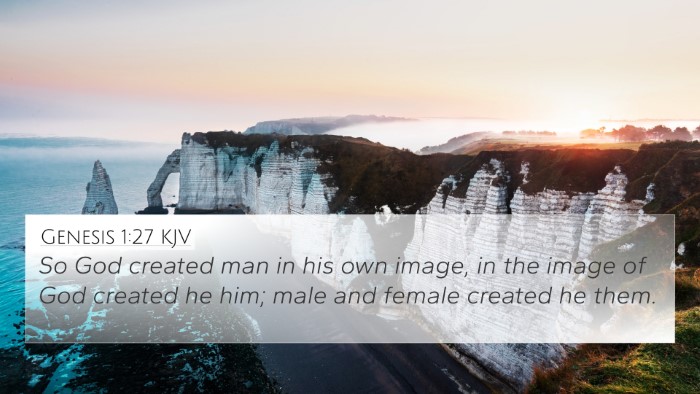
Genesis 1:27 (KJV) »
So God created man in his own image, in the image of God created he him; male and female created he them.
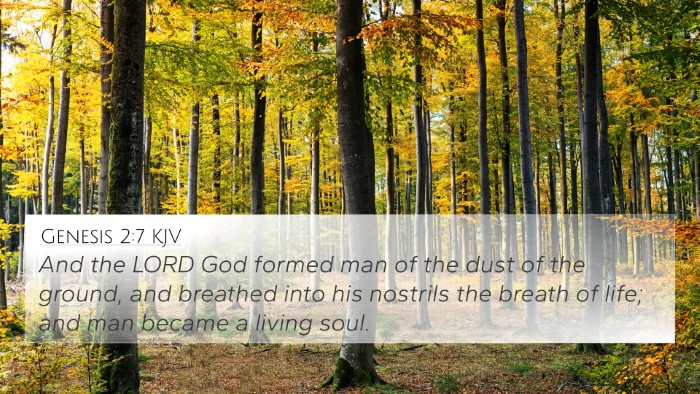
Genesis 2:7 (KJV) »
And the LORD God formed man of the dust of the ground, and breathed into his nostrils the breath of life; and man became a living soul.
1 Timothy 2:13 Verse Analysis and Similar Verses
Understanding 1 Timothy 2:13
The verse 1 Timothy 2:13 states: "For Adam was formed first, then Eve." This foundational scripture has been interpreted in various ways, with insights gathered from public domain commentaries, offering a rich perspective on its meaning.
This verse is often discussed in the context of order and roles within creation and is significant in understanding the Apostle Paul's teachings regarding leadership and authority in the church.
Context and Significance
Paul, in his letter to Timothy, addresses concerns within the church regarding conduct, worship, and the roles of men and women. The mention of Adam and Eve serves to underline the sequence established by God in creation, suggesting a divinely ordered structure.
Key Insights from Commentaries
-
Matthew Henry:
Henry explains that this verse exemplifies the divine order and authority as established at creation, emphasizing that Adam, being formed first, reflects a primary role in both responsibility and representation. The order of creation implies a significant handling of spiritual matters and ecclesiastical authority.
-
Albert Barnes:
Barnes stresses the importance of understanding the order of creation to discern the roles intended for men and women, establishing a precedent for the church's governance and functions. He highlights how Eve’s creation from Adam not only signifies unity but also suggests a complementarity in roles.
-
Adam Clarke:
Clarke provides a cautious interpretation, indicating that while the verse denotes a created order, it does not diminish the value or spiritual capability of women. Instead, it underscores a distinction in roles, particularly within the context of worship and authority in the church.
Bible Cross-References
The understanding of 1 Timothy 2:13 can be enriched by considering the following cross-references:
- Genesis 2:7: "Then the LORD God formed the man from the dust of the ground and breathed into his nostrils the breath of life, and the man became a living being." - This verse underlines the original creation order.
- Genesis 2:18: "The LORD God said, 'It is not good for the man to be alone. I will make a helper suitable for him.'" - Acknowledges the creation of Eve as a complementary partner for Adam.
- Ephesians 5:22-23: "Wives, submit yourselves to your own husbands as you do to the Lord." - Reflects the theme of order and responsibility in marital relationships.
- 1 Corinthians 11:8-9: "For man did not come from woman, but woman from man; neither was man created for woman, but woman for man." - Demonstrates the theological implications of creation order.
- 1 Corinthians 14:34: "Women should remain silent in the churches. They are not allowed to speak, but must be in submission, as the law says." - Discusses women’s roles within the church, aligning with the themes in Timothy.
- 1 Peter 3:7: "Husbands, in the same way be considerate as you live with your wives and treat them with respect as the weaker partner..." - Highlights the importance of mutual respect and understanding in gender roles.
- Galatians 3:28: "There is neither Jew nor Gentile, neither slave nor free, nor is there male and female, for you are all one in Christ Jesus." - Points to equality in Christ, which coexists with different roles in society and church.
Thematic Connections
The thematic connections arising from 1 Timothy 2:13 include discussions on gender roles, authority within the church, and the relationship between creation and authority. These connections are vital for a comprehensive understanding of related scripture.
Connecting Biblical Themes
The Apostle Paul often draws connections between creation and spiritual authority. This establishes a framework for examining how biblical teachings support or challenge contemporary views on gender roles. The connections between various letters of Paul, particularly in relation to the creation order, can enhance one's understanding of scripture's coherent narrative.
Tools for Cross-Referencing
Engaging in comparative Bible verse analysis enhances understanding across scripture. Effective tools for cross-referencing include:
- Bible concordance
- Bible cross-reference guide
- Comprehensive Bible cross-reference materials
Conclusion
1 Timothy 2:13 serves as a pivotal verse that has implications not just for the audience at that time but also for modern readers seeking to understand the dynamics of authority, order, and the roles of men and women as presented in the Bible. Its interpretation benefits significantly from thematic Bible verse connections and a review of related scriptures.
Ultimately, understanding 1 Timothy 2:13 within its biblical context fosters an insightful dialogue on the roles established by God and encourages deeper exploration of other relevant scriptures.
